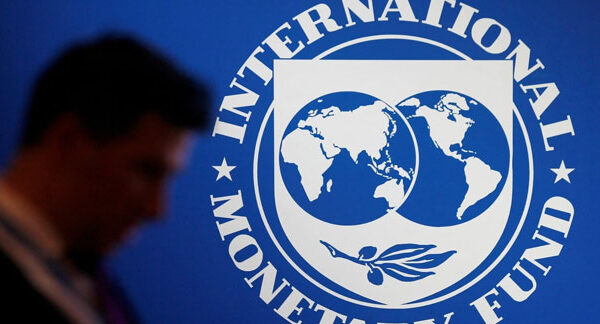Tax on pizza toppings in India, what’s the deal?
Getting the right formula of toppings that make a pizza delicious can be a challenge as too many toppings can lead to soggy pizza dough and the wrong mix can affect the taste.
But in August, an Indian pizza toppings company faced a different kind of challenge in court. The issue was not about the taste of the topping but about the rate of Goods and Services Tax i.e. GST.
It should be noted that GST was introduced nationwide five years ago and it has brought the world’s fifth largest economy US$ 17 billion annually while this new tax system has increased tax revenue. Is.
Khera Trading Company argued in court that their mozzarella (a type of cheese made from buffalo milk) topping should be classified as cheese because cheese is taxed at a relatively low rate of 12 percent. .
They say their toppings use more than a third of cheese and milk. But a court in the state of Haryana, adjacent to the capital Delhi, disagreed. He says that the cheese used in the topping cannot be taken as just cheese in the true sense.
The court held that the toppings contained vegetable oil and that it actually constituted 22 percent of the topping’s ingredients. The firm said the oil helps with texture and adds flavor to the pizza and is also cheaper.
The court says that vegetable oil is not an ingredient of cheese. Hence their toppings cannot be counted as cheese. Instead, it will be called a ‘food preparation’ substance and will be taxed at more than 18 percent. The company lost the case.
Such court battles force tax experts to believe that India’s GST system is too complicated. This new tax has been introduced in place of various taxes levied in 29 states.
Experts say the tax system, with five different rates of 5, 12, 18, and 28 percent and zero tax on unpackaged food on nearly 2,000 goods and services, has become too burdensome.
It should be noted that petrol, diesel, electricity and real estate etc. are not covered under GST.
Anita Rastogi, partner and expert in GST and indirect taxes at PricewaterhouseCoopers, a consulting firm, says, “This can lead to confusion by classifying a product or service based on specific codes as well as their rate. has gone So since the introduction of GST, there has been a flurry of [court] decisions.
When it comes to the Indian food industry, the tax system seems to be in knots. In September, a court ruled in a long-running 20-month-long case on parathas because it attracts 18 percent GST while roti is taxed at five percent even though both have the same basic ingredient.
Vadelal Industries, a leading Gujarat-based company, approached the court in June last year asking why its packaged parathas were being taxed so much.
They provide eight varieties of packed parathas, some of which also contain vegetables. They argued that only bread tax should be levied on their parathas as the main ingredient of both is wheat flour.
The court says that vegetable oil is not an ingredient of cheese. Hence their toppings cannot be counted as cheese. Instead, it will be called a ‘food preparation’ substance and will be taxed at more than 18 percent. The company lost the case.
Such court battles force tax experts to believe that India’s GST system is too complicated. This new tax has been introduced in place of various taxes levied in 29 states.
Experts say the tax system, with five different rates of 5, 12, 18, and 28 percent and zero tax on unpackaged food on nearly 2,000 goods and services, has become too burdensome.
It should be noted that petrol, diesel, electricity and real estate etc. are not covered under GST.
Anita Rastogi, partner and expert in GST and indirect taxes at PricewaterhouseCoopers, a consulting firm, says, “This can lead to confusion by classifying a product or service based on specific codes as well as their rate. has gone So since the introduction of GST, there has been a flurry of [court] decisions.
When it comes to the Indian food industry, the tax system seems to be in knots. In September, a court ruled in a long-running 20-month-long case on parathas because it attracts 18 percent GST while roti is taxed at five percent even though both have the same basic ingredient.
Vadelal Industries, a leading Gujarat-based company, approached the court in June last year asking why its packaged parathas were being taxed so much.
They provide eight varieties of packed parathas, some of which also contain vegetables. They argued that only bread tax should be levied on their parathas as the main ingredient of both is wheat flour.
The court said no. Although the judge agreed that pack parathas mainly contain wheat flour, there is a difference that it also contains ‘other ingredients’ like water, vegetable oil, salt, vegetables and radish.
Rejecting the plea, the court said that ‘the parathas supplied by the appellant are different from roti.’
There are other such head-scratching decisions.
A court ruled that ice cream sold through parlors would be taxed higher (18%) than ice cream sold in restaurants because they sell ready-made ice cream instead of making/preparing the ice cream. . Parlors sell ice cream ‘not as a service but as a good, even if the supply contains some component of the service.’
Then there was a case in Gujarat involving a ‘Frymes’ or salty food company.
Fries is a snack food made from potato and sago. They argued that their products should be exempted from GST like papads, but the court said that fries are ready-made while papads have to be cooked before eating.
“Both products are distinct and have individual identities,” the judge said. Ever since the ruling, the 18 percent tax on fries or snacks, ie chips, has continued.
A flavored milk company approached the court complaining that 12 percent tax is levied on the beverages they manufacture while milk is exempt from the tax.
The company said their product contains ‘92% milk, and only 8% sugar’. But the court held that flavored milk does not come under the definition of ‘milk’ in the Act and is therefore not exempt from tax, and a dispute arose over whether ready-to-cook dosa (a popular breakfast) and idli (boiled rice cakes) should be taxed more than its batter (batter).
Economists say that one way to resolve this conflict is to simplify the various rates into one lower rate. (Of the countries that introduced GST after 1995, 80 percent eventually opted for a flat tax on everything.)
Economists Vijay Kelkar and Ajay Shah say that “various pressure groups [in India] lobby for higher or lower taxes on one industry or another and this distorts the distribution of resources in the economy.”
He believes that the government is a major buyer of goods and services, so another low-rate tax, or GST, “will lead to cost savings at all levels of government.”
A lower and single rate classification increases the likelihood of eliminating disputes, reducing tax evasion and reducing compliance costs.
Uday Pumprikar, partner at global accounting and consultancy firm EY and an expert on indirect tax and services in India, says, ‘The moment you consolidate or reduce rates, classification disputes will reduce but in a country like India. Introducing a single tax or dual tax where there is a large income gap risks placing a greater tax burden on the poor.’
Prime Minister Narendra Modi once described GST as a ‘good and easy tax’ but clearly it has not fully lived up to it.








